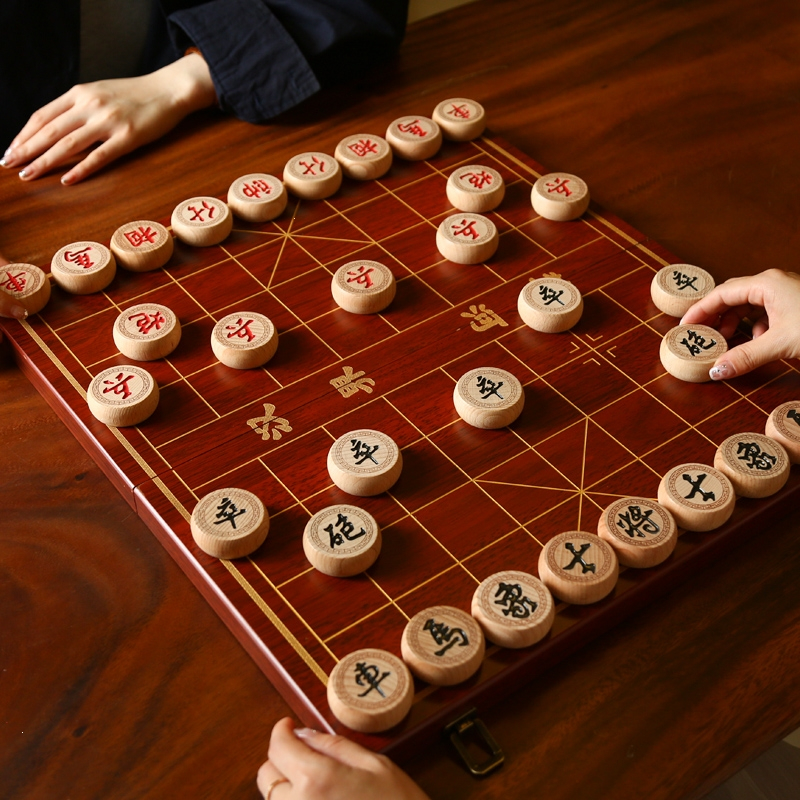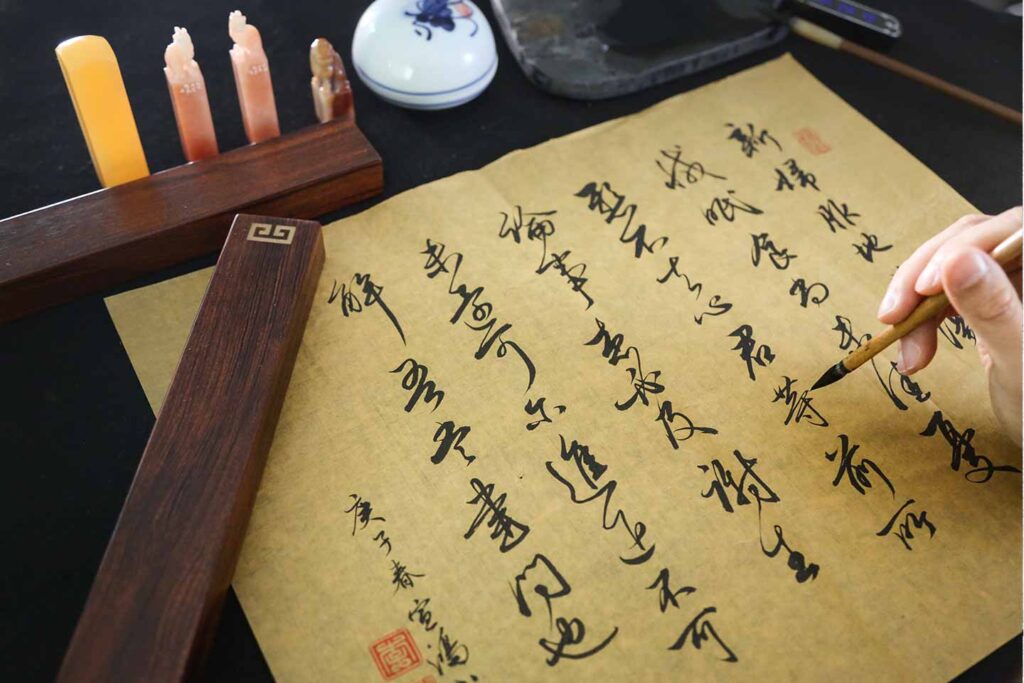中国象棋,古代叫”象戏”。大约起源于战国时代,是根据春秋战国时两军对垒的战阵创造的战斗游戏。唐朝时,象棋已很普及。到了宋代,中国象棋基本定型,并且在全国流行。
Chinese chess is an ancient game called “Xiang Xi”. It originated around the Warring States period and was created as a combat game based on the battle formation between two armies during the Spring and Autumn Period and the Warring States Period. During the Tang Dynasty, Chinese chess was already very popular. By the Song Dynasty, Chinese chess had largely become established and popular throughout the country.
中国象棋的棋盘是正方形的,棋盘的中间有一条“界河”,把对垒的双方隔在两边。两边画有交叉线的地方共有90个交叉点,棋子就摆在这些交叉点上。中国象棋共有32枚棋子,分为黑红两组,下棋的双方各用一组,每组各有一帅(招)、两士、两相(象)、两马、两车、两炮、五兵(卒)。两人对局时,按照规定的位置将各自的棋子摆好,红方先走,然后轮流下棋子。各种棋子走法不同,如:马走日字,相走田字,车可以”横冲直撞”,兵只可前行……最后以把对方将①死为胜,不分胜负为和棋。
The Chinese chess board is square, with a ‘boundary river’ in the middle of the board, separating the opposing sides. There are 90 intersections where lines are drawn on either side, and the pieces are placed on these intersections. There are 32 Chinese chess pieces, divided into two groups of black and red, one for each side of the game, each group having one marshal (move), two soldiers, two phases (bishop), two knights, two rooks, two cannons and five pawns (pawn). When two players play, their pieces are placed in the required positions, with Red going first and then taking turns playing the pieces. Each piece moves differently, e.g. a knight moves to the sun, a bishop moves to the field, a rook can “rampage”, a pawn can only move forward ……. In the end, the game is won by killing the opponent’s general ①, and a draw is won or lost.
1949年以后,中国象棋被列入全国正式体育比赛项目。20世纪70年代后,中国象棋开始走出亚洲,走向世界。现在,世界上已经有40多个国家和地区建立了中国象棋组织。
After 1949, Chinese chess was included in the official national sporting events, and after the 1970s, Chinese chess began to move out of Asia and into the world. Nowadays, more than 40 countries and regions in the world have established Chinese chess organisations.
①将:下象棋时攻击对方的”将”或”帅”。 如把对方的”将”或”帅”拿下即获胜。
①Jiang: When playing chess, one attacks the opponent’s “general” or “marshal”. If the opponent’s “general” or “marshal” is taken down, the player wins.



